Sixth Grade English Language Arts Social and Emotional Learning
If in that location's anything the by twelvemonth in didactics has fabricated painfully obvious, it is the urgency of social-emotional education for our students. Kids need support and pedagogy to manage successfully in school (whether that's in person or online) and in life. Skills like recognizing and managing emotions, being a good friend, controlling impulses, communicating finer, and working with others are invaluable. Here are 26 unproblematic ways you can integrate social-emotional learning activities in your classroom every day.
1. Get-go the day with a check-in.
Source: Jim Borgman
Brand it a goal to start each day with a personal connection. It doesn't demand to be a fourth dimension-consuming or elaborate procedure. It could be equally unproblematic every bit giving a warm greeting to welcome each person every bit they go far in the morning time or request a question, even if you are teaching virtually.
two. Employ story fourth dimension for teachable moments.
Read-alouds are the perfect tool for exploring social-emotional themes with your course. They're not only for little kids either—there are tons of gorgeous picture books with complex themes and vocabulary that older kids will love too. Here are 50 must-have film books to teach social-emotional skills.
3. Do lots of partner activities.
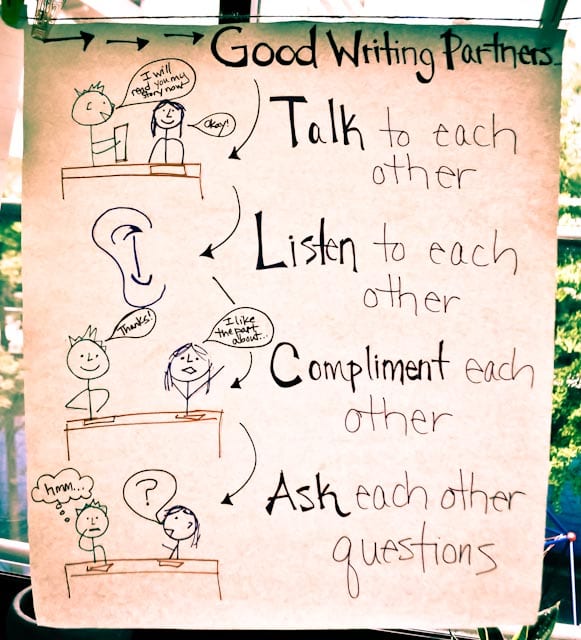
Source: 2B's Black and White Super Stars
Give kids lots of opportunities to work with partners. Working with a partner helps kids learn to cooperate and builds customs in your classroom. Alternating between strategically assigning partnerships and allowing kids to make their ain choices.
4. Teach kids how to piece of work in a group.
Beingness able to work in a group setting is an important life skill. Students will acquire how to negotiate with others, develop leadership skills, and effigy out their ain strengths so they can best contribute to the group. Click here for tips to make group work more productive.
5. Look for a trusted SEL curriculum.
It helps to be systematic when it comes to teaching social-emotional skills, and a research-backed curriculum can aid you encompass the skills your students need the most. Many SEL curriculums are designed to teach topics such as advice, teamwork, and self-regulation in simply a few minutes a day, and in combination with the bookish subjects y'all're already education. Check out the options bachelor from our friends at HMH every bit one case.
6. Nurture a civilisation of kindness.
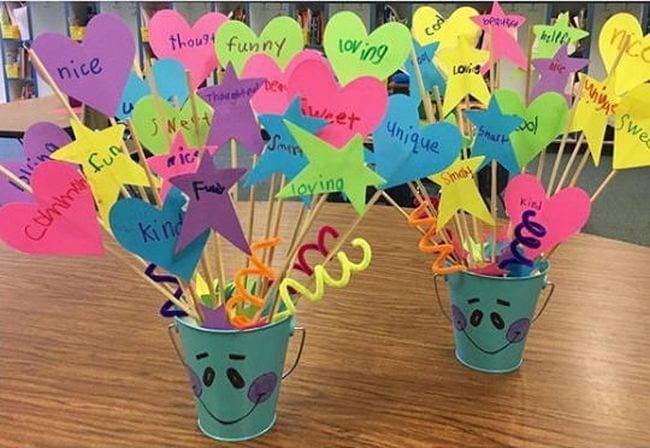
Source: Miss Education
At the start of the twelvemonth, read Have Y'all Filled a Saucepan Today?, a story about the power of kind words. So, create your own bucket for the classroom. Get a small-scale tin bucket from a craft store and cutting 3-past-3-inch pieces out of card stock. Kids can write messages of kindness, appreciation, and honey on the cards throughout the week to fill up up the bucket. At the end of each week, spend a few minutes sharing these notes of encouragement to end the week on a positive note. Hither are 21 bucket-filler ideas. And here are more social-emotional learning activities.
vii. Do lots of function-playing.
Sometimes y'all take to put yourself in someone else's shoes to truly understand a state of affairs. Taking time to function-play tricky or troubling situations that show upwardly in your classroom helps kids develop empathy and understand other people'due south feelings. For example, it's a great strategy to use when discussing bullying. Impress these free character role-playing cards.
8. Build their social-emotional vocabulary.
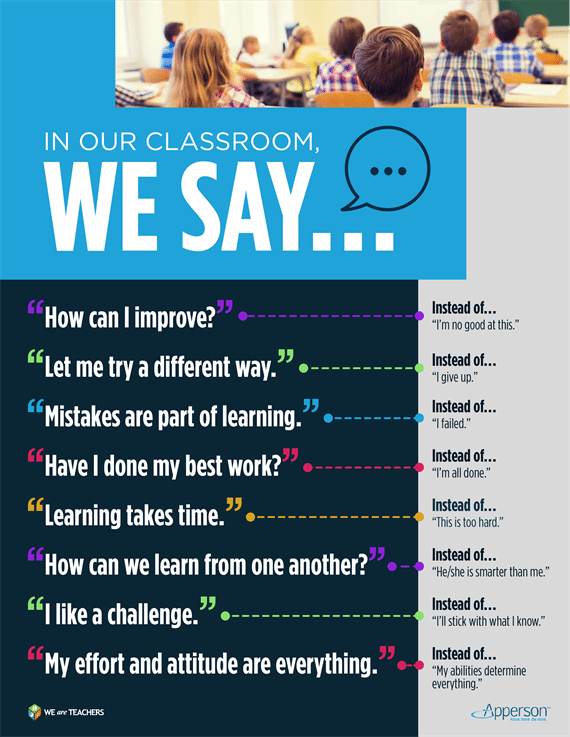
Here'south a free affiche that shows eight phrases that nurture growth mindset. It gives students positive phrases they can use to foster their resilience and overcome failure. Hang a large copy on the wall, or give them their own smaller version for their journals or planners.
nine. Brand infinite for cogitating writing.
Give your educatee time to journal and gratis-write. Put on quiet music. Dim the lights. Make writing time a quiet, soothing pause from busyness that your students will look forward to. For reluctant starters, you tin can provide a menu of optional prompts. Here are 50 Creative Writing Prompts for Tertiary Graders. Independent writing is an ideal activity for hybrid learning.
10. Fix a calm-downwardly corner.
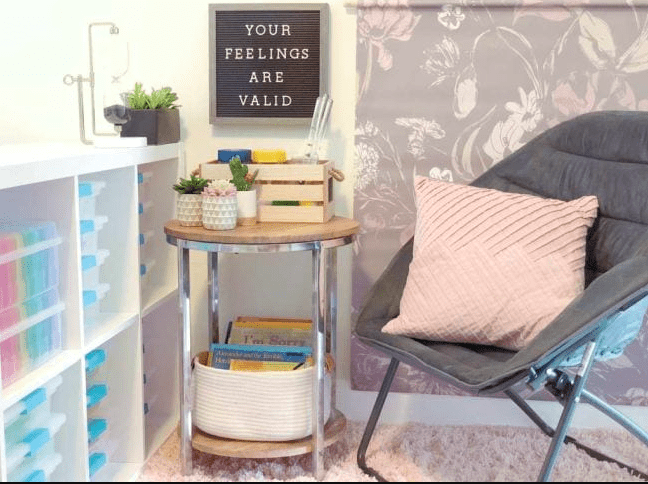
Source: Jillian Starr Teaching
Create a special place in your classroom for kids to take a intermission when they are upset or aroused or need to calm themselves. This infinite should have a peaceful atmosphere and might include comfy pillows to sit on, racket-canceling headphones, a fish tank, journaling materials, calming images, and/or books about peace.
11. Allow for talk time.
Give kids a lot of opportunities—both structured and unstructured—to talk to 1 another during the course of the day. Bouncing ideas off of one another or figuring out problems with a little give-and-have will assistance your students build understanding and conviction. Here are 10 groovy techniques to try with your students. When your form is cracking up and getting wiggly, taking a v-infinitesimal conversation break is a great mode to hit the reset push. This can work for in-person or online learning.
12. Teach kids how to manage conflict with peer mediation.
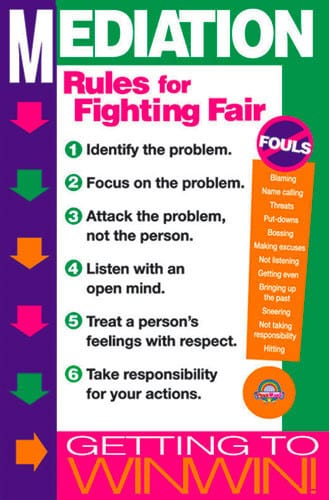
Source: PeaceWorks
Peer arbitration is a problem-solving procedure that helps students involved in a dispute encounter in a private, safety, and confidential setting to work out problems with the help of a pupil mediator. There are lots of programs out there—here'due south 1 case.
13. Teach students to monitor their ain progress.
Make personal goal-setting (academic, emotional, social, etc.) a regular action with your students. It will strengthen their intrapersonal skills and requite them ownership of their own learning. Help them develop the addiction of revisiting and adjusting their goals ofttimes to monitor progress. Am I meeting my goals? What do I demand to work on next? How do I want to grow? Download this complimentary goal-setting kit.
14. Use anchor charts to teach social-emotional skills.
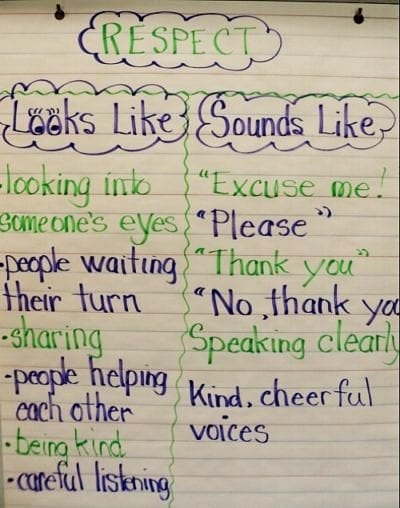
Source: 1 Less Headache
You lot tin can create anchor charts with your class well-nigh many unlike topics, from "Owning Your Learning" to "What Does Respect Look Like?" and "Exist a Problem-Solver." Cheque out the WeAreTeachers classroom-management anchor charts Pinterest board for many more ideas.
15. Build customs with teams.
Consider an alternative seating arrangement that allows kids to sit in teams. Let each squad create an original name, motto, and flag. This is a great way for students to feel a sense of belonging, and information technology encourages collaboration and cooperation. Modify up teams every 6 to 12 weeks.
16. Play games to build community.
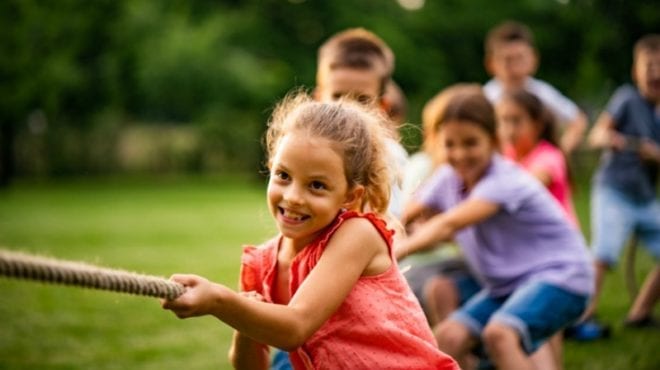
Cooperative-learning games can promote social and relationship skills. At that place are tons of SEL resources out in that location including activities to play in your classroom. Here are 28 awesome team-edifice games and activities.
17. Cultivate friendship.
Friendship comes piece of cake for some kids; others may need a little coaching to be a good friend. There are lots of means to cultivate friendship in the classroom, simply ane of our favorite methods is with videos. Here are 12 of our favorite videos for teaching kids about friendship.
18. Buddy up with an older or younger grade.
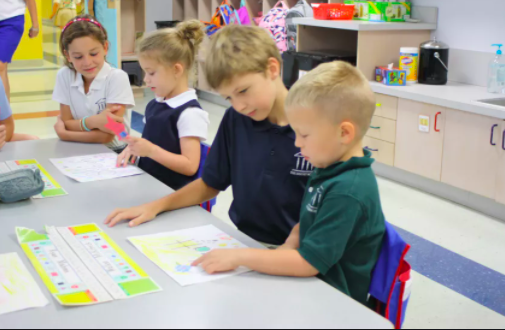
Source: The Brilliant School
Having a special connectedness with another class is a great manner to build positive ongoing relationships in your school community. Kids are always amazed at how piece of cake it is to find common basis with younger or older students. The big kids feel important, and the little kids experience special. For how-tos, cheque out the power of buddy classrooms: 19 ideas.
xix. Aid students manage feelings and emotions.
Creating a caring classroom environs requires a little coaching. I way to starting time is to teach students to recognize feelings and emotions and learn to manage their moods. This ready-to-use unit of measurement has 5 engaging lessons to get you started.
20. Teach mindfulness.
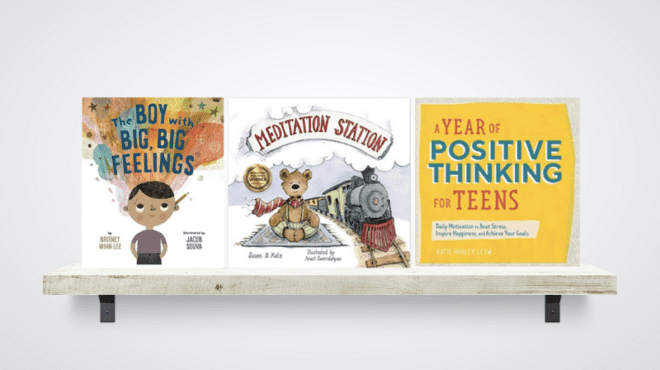
This chaotic yr has created a lot of stress and anxiety for our kids. Practicing mindfulness is one activity that may alleviate anxious feelings and help kids further develop their social-emotional sensation. Here are 15 books to teach kids about mindfulness.
21. Hold regular course meetings.
Make certain all of your students feel heard. Check in often to celebrate what is working and address things that demand tweaking within your classroom community. Empower all of your students with a vox and a vote to give them buying of their surroundings.
22. Encourage expression through art.
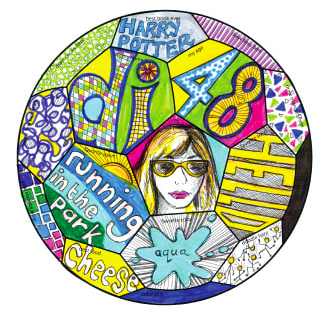
Source: The Imagination Box
Sometimes students think and feel things that they can't quite put into words. Art is a nifty tool to allow them to explore topics from a unlike perspective. Sketch your thoughts and feelings out as a prewriting activity. Create a painting as an interpretation of a slice of music or poetry.
23. Foster deeper connections.
Accept your students interview each other throughout the yr almost topics such as cultural background, family traditions, or opinions about a current upshot. Conducting a formal interview is different than a coincidental conversation and teaches skills such as focused listening and conversational skills. In addition, learning about their classmates volition broaden their perspective as they consider that anybody's background and experience are not necessarily the aforementioned equally their own.
24. Teach them to work toward a common goal.
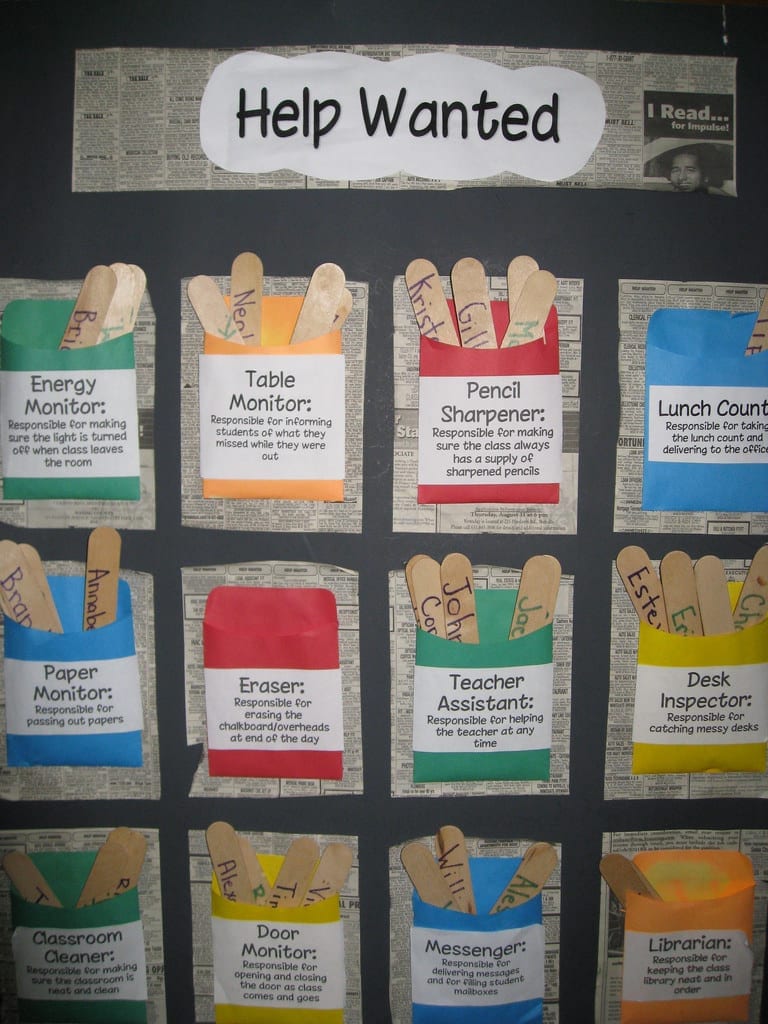
Source: Teaching Excellence
Classroom jobs teach responsibility and give kids ownership of their classroom. Pride in a job well-washed is a great conviction architect. Here are 25 fun, like shooting fish in a barrel chore charts you tin can create for your classroom.
25. Teach your kids about Zones of Regulation.
Sometimes big feelings are hard to manage. Here are 15 activities that help kids recognize powerful emotions and learn strategies for dealing with them.
26. End each day intentionally.
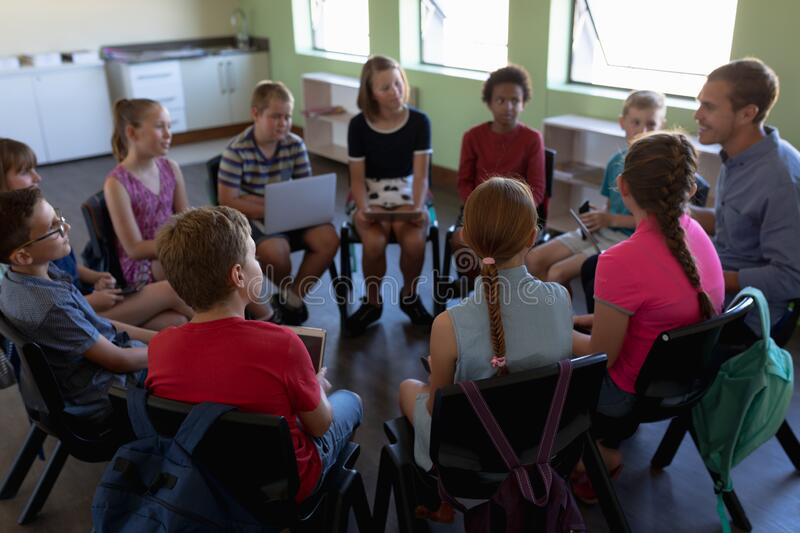
The stop of the school solar day can go pretty hectic. Terminate each 24-hour interval intentionally past meeting for just a few minutes to reflect on your day together. Bank check in with how your students are feeling, talk well-nigh what went well, read some notes from the kindness saucepan, and prepare some goals for tomorrow.
What is your current go-to for teaching social-emotional skills? Share in the comments below.
Plus, don't miss these complimentary social-emotional learning activities and lesson plans from our friends at HMH.
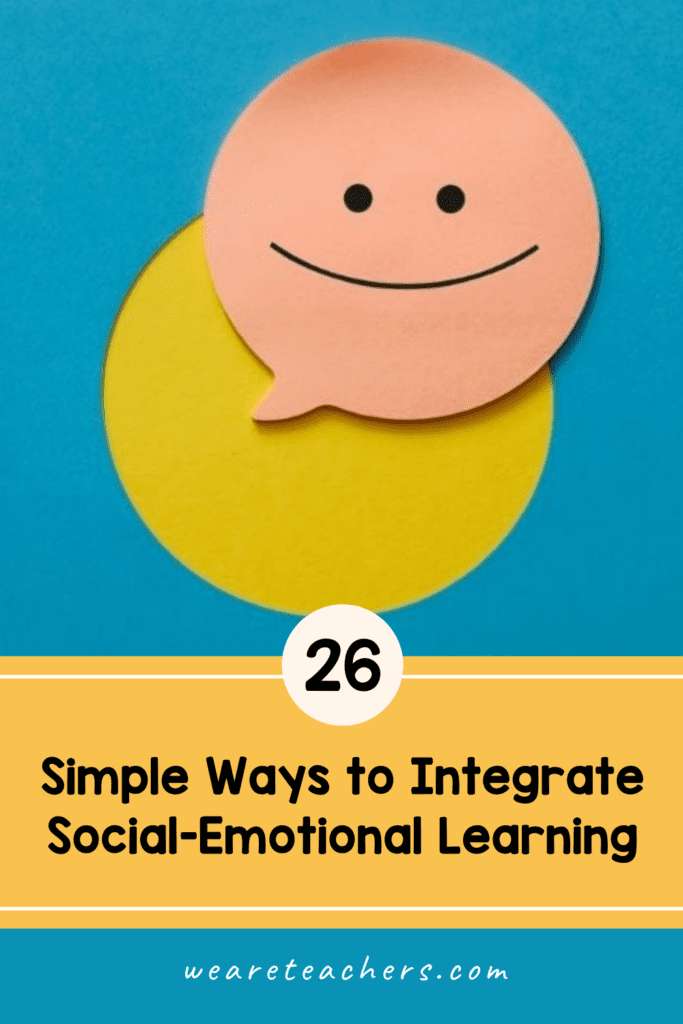
Source: https://www.weareteachers.com/21-simple-ways-to-integrate-social-emotional-learning-throughout-the-day/

0 Response to "Sixth Grade English Language Arts Social and Emotional Learning"
Post a Comment